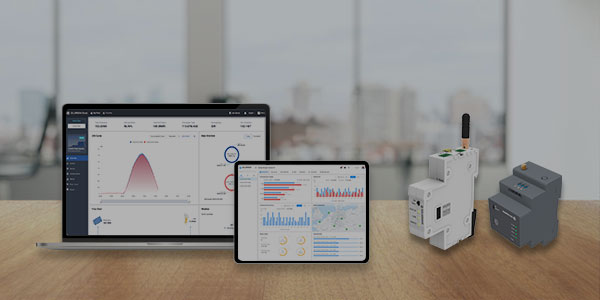PV monitoring software is no longer a “nice-to-have” add-on, but it’s the operating system for modern solar installations. By turning raw device signals into clear, contextual intelligence, a monitoring platform empowers homeowners, installers, and O&M teams to maximize yield, cut costs, and reduce downtime. SOLARMAN Smart is a homeowner-focused energy management APP that combines broad hardware compatibility, fast onboarding, and features tailored to everyday users.
At its core, PV software collects data from inverters, sensors, meters, batteries, and sometimes weather stations. It synthesizes that telemetry into visual dashboards, alerts, historical reports, and APIs so stakeholders can understand production patterns, consumption behavior, and system health.
Unlike manual meter readings, modern PV smart monitoring platforms provide the continuous visibility needed to act quickly when something deviates from expected performance. SOLARMAN Smart positions itself as “An Energy Expert Around You”, focusing on household owners while still enabling professional collaboration.
Key Features of PV Monitoring Software
A truly effective PV monitoring solution combines functionality across several axes: compatibility, data fidelity, user experience, and control. SOLARMAN Smart highlights these elements in practice.
- Compatibility: by supporting the most majority of global inverter brands, the solar platform minimizes integration risk and makes it easier to use existing hardware rather than forcing replacements. This expansive energy monitoring device support helps end users adopt monitoring quickly across diverse solar setups.
- Data flexibility: SOLARMAN Smart allows users to set data update frequency and export data on demand, ensuring the platform can serve quick troubleshooting needs as well as long-term analytics. Timely alert reporting surfaces problems early, so owners and service teams receive clear, actionable notifications when abnormal behavior appears.
- Ease of use: SOLARMAN Smart advertises that a new plant can be created in under one minute, with automatic matching of location, time zone, and currency. That speed removes friction for DIY users alike and ensures systems are monitored correctly from day one. Device management tools let administrators add, delete, and control devices from anywhere, simplifying distributed operations and remote support.

Benefits of Real-Time Solar PV Monitoring
Real-time solar monitoring brings multiple benefits that compound over time. For homeowners, the immediate payoff is visibility: a live energy-flow view shows solar generation, household consumption, battery state, and grid import/export at a glance. This single-pane visualization makes it easier to decide when to run heavy appliances, when to prioritize battery charging, or when to delay non-essential loads. Over weeks and months, these behavioral adjustments can meaningfully reduce electricity spending and increase self-consumption of onsite solar generation.
How PV Monitoring Software Improves Energy Yield?
A solar monitoring platform contributes to yield improvement in three practical ways:
- It speeds fault detection. Rather than discovering underperformance during periodic inspections, continuous telemetry reveals inverter outages, string imbalances, or shading impacts in near real-time.
- It enables smarter energy routing. When integrated with storage and controllable loads, the platform can prioritize self-consumption of solar energy, reducing exports during low-tariff periods and charging batteries when surplus generation exists.
- It improves decision-making. Historical yield reports and export statistics let owners and operators quantify lost generation and prioritize fixes that deliver the best return on investment.
Together, these capabilities close the gap between installed capacity and actually realized generation.
Choosing the Right PV Monitoring Platform
When evaluating options, prioritize platforms that balance device compatibility, intuitive UX, fast onboarding, security, and support. Look for features that matter in practice: rapid plant creation, clear energy-flow visualizations, configurable alerts, and controlled sharing with service partners. For homeowners seeking an approachable yet capable solution, SOLARMAN APP’s focus on household usability, coupled with broad hardware compatibility, makes it a strong candidate.
As solar systems become more common and distributed energy resources proliferate, PV monitoring software shifts from optional nice-to-have to foundational infrastructure. The platforms that combine broad compatibility, rapid onboarding, actionable alerts, and secure collaboration will empower owners and professionals to squeeze more value from their assets. If your goal is to get the most from your solar investment, monitoring is the place to start, and SOLARMAN Smart showcases how household-focused design can make that power accessible to everyone.
FAQs of PV Monitoring Software
Why do I need PV system software?
Monitoring turns passive solar hardware into an actively managed system. It helps detect faults quickly, verify system output, increase self-consumption, optimize battery and EV charging, and provide evidence of performance for warranty or financing purposes.
Which devices does PV monitoring software support?
Good platforms support a wide range of inverters, data loggers, smart meters, and storage systems. Many PV monitoring system suppliers maintain device lists; top solutions offer broad compatibility or open APIs to integrate new equipment. Check the supported device list before purchasing.
Can I view monitoring data on my phone?
Yes. Most PV monitoring platforms offer mobile apps and web dashboards to view live generation, historical charts, alerts, and device status.
How much does solar PV monitoring software cost?
Pricing models vary: some suppliers charge a one-time device fee, others a subscription (monthly/annual), and some include basic monitoring free with a paid advanced tier. Consider the ROI from reduced downtime, improved yield, and lower O&M costs when evaluating price.
Can monitoring software integrate with home energy management or building management systems?
Yes. Many solar monitoring platforms provide APIs, MQTT, or standard data export formats so you can integrate PV data into HEMS, BMS, or energy analytics platforms.










